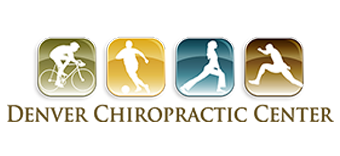Our 14th Anniversary and This Week’s 1-Page Health News
Those of you who want these weekly 1-Page Health News emails sent directly to your email can go to denverback.com and fill out the little form on the upper left part of the page.
May marks another year for Denver Chiropractic Center. For those of you keeping score, that’s 14 years down, and now in our 15th year.
Last week was the busiest week we’ve ever had. Ever. And we’d like to thank you. Your trust, support and referrals are what make our existence and growth as a business possible. We look forward to being here to help you for a few more decades. Once again, thanks.
We’d also like to wish all the moms out there a Happy Mothers Day.
Here’s this week’s 1-Page Health News:
Mental Attitude: Berry Good News. Men who regularly consume foods rich in flavonoids (such as berries, apples, certain vegetables, tea and red wine) may significantly reduce their risk for developing Parkinson’s disease. Flavonoids are naturally occurring, bioactive compounds present in many plant-based foods and drinks. Neurology, April 2012
Health Alert: Stressed? The risk for coronary heart disease and stroke increases by 30% in a person whose partner has cancer. The cause is probably the negative stress to which the cancer patient’s partner is exposed. Previous studies show that stress can affect the nervous system, blood pressure, and inflammation, increasing the risk of developing coronary heart disease and stroke. Centre for Primary Healthcare Research in Malmö, April 2012
Diet: Pain Relief. The supplement Methylsulfonylmethane gave osteoarthritis patients relief from symptoms of pain and physical dysfunction. Osteoarthritis Cartilage, 2008 Exercise: Being Fit. Improving or maintaining physical fitness appears to help obese and overweight children reach a healthy weight. During a four-year study, obese and overweight girls and boys who achieved fitness were 2.5 to 5 times more likely to reach a healthy weight than those who stayed underfit. Obesity, April 2012
Active Release Techniques: Sciatica. Many people with sciatica are worried that it’s coming from a ruptured disc. While this is sometimes true, in most cases, muscles are pressuring the sciatic nerve and causing symptoms down the back of the leg. The piriformis is a likely suspect, as are the hamstrings. Using Active Release Techniques to relieve the tension in these muscles can take the pressure off of the nerve and fix the problem.
Wellness/Prevention: Obesity and Watching TV. In a study of obesity among European children, Dr. Yannis Manios, Assistant Professor at Harokopio University in Athens, writes, “We found that many countries are lacking clear guidelines on healthy eating and active play. However, there is good evidence linking sedentary behavior (like TV watching) with subsequent obesity. Obesity Reviews, March 2012 (Um, this is not brilliant work.)
Quote: “Simple diet is best; for many dishes bring many diseases; and rich sauces are worse than heaping several meats upon each other.” ~ Pliny
